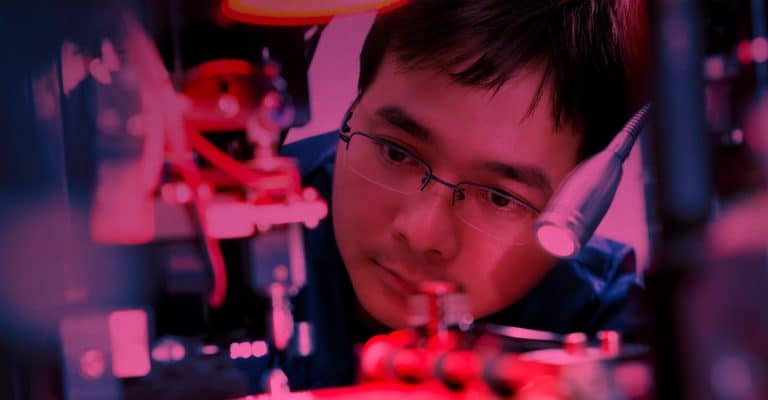- RESEARCHDistance Learning at AIU is enhanced by vast academic resources and innovative technologies build into the Virtual Campus: Hundreds of self-paced courses with video lectures and step by step lessons, thousands of optional assignments, 140,000 e-books, the Social Media & Networking platform allowing collaboration/chat/communications between students, and MYAIU develop students holistically in 11 areas beyond just academics.
- PROGRAMS OFFERED
- Areas of Study
- Courses and Curriculum
- Open Courses
- Register for a Program
- Associate Program
- Associate in Addiction Counseling
- Associate in Agriculture Food And Resources
- Associate in Anti Terrorism Security
- Associate in Behavior Analysis In Special Education
- Associate in Bioethics
- Associate in Climatology
- Associate in Cultural Theological Communication
- Associate in Culinary Arts
- Associate in Ecotechnology
- View all Associates Programs
- Bachelor Program
- Bachelors in Community Development
- Bachelors in Environmental Science
- Bachelor in Education (B.Ed, BS)
- Bachelors in Economics
- Bachelors in Entrepreneurship
- Bachelors in Financial Administration
- Bachelors in Human Resource Management
- Bachelors in Linguistics
- Bachelors in Nutritional Science
- Bachelors in Occupational Health and Safety
- Bachelors in Psychology
- View all Bachelor Programs
- Doctorate Program
- Doctor | of Biology (PhD)
- Doctorate in Business Administration (DBA, PhD)
- Doctor of Economics (PhD)
- Doctor of Electrical Engineering (D.Sc, PhD)
- Doctor of Finance (PhD)
- Doctorate in International Relations
- Doctorate in Information Technology (D.Sc)
- Doctor of Legal Studies (PhD)
- Doctor of Project Management (PhD)
- Doctor of Sociology (PhD, D.Sc)
- Doctorate in Sustainable Natural Resources Management
- View all Doctorate Programs
- Master Program
- Postdoctoral Program
- Postdoctoral in Animal Science
- Postdoctoral in Anti Terrorism Security
- Postdoctoral in Behavior Analysis In Special Education
- Postdoctoral in Bioethics
- Postdoctoral in Blockchain Technology and Digital Currency
- Postdoctoral in Business Management
- Postdoctoral in Cloud Computing
- Postdoctoral in Computer Engineering
- View all Postdoctoral Programs
AIU offers a wide range of majors in areas including the Arts, Business, Science, Technology, Social, and Human studies. More than 120 degrees and programs are available for adult learners at the associate’s, bachelor’s, master’s, doctoral and postdoctoral level. - VIRTUAL CAMPUS
Distance Learning at AIU is enhanced by vast academic resources and innovative technologies build into the Virtual Campus: Hundreds of self-paced courses with video lectures and step by step lessons, thousands of optional assignments, 140,000 e-books, the Social Media & Networking platform allowing collaboration/chat/communications between students, and MYAIU develop students holistically in 11 areas beyond just academics.
- ALUMNI
The world is YOUR campus!”, that is the message of AIU’s month magazine Campus Mundi. Hear the voices and see the faces that make up AIU. Campus Mundi brings the world of AIU to you every months with inspirational stories, news and achievements by AIU members from around the world (students and staff are located in over 200 countries).
Could 3D Printing Help Solve the US Housing Crisis?

Could 3D printing be the key to solving America’s housing shortage?
How can homes be built in just 24 hours at a fraction of the cost?
Can innovative 3D-printed housing revolutionize affordability and sustainability in the U.S.?
Use your research skills and write about how regulatory challenges and building code variations across U.S. states impact the adoption of 3D-printed housing technologies in the construction industry. Use credible sources such as academic journals, educational websites, and expert interviews to gather information and present a well-rounded answer.
(Login to your student section to access the AIU Additional Resources Library.)
Could 3D Printing Help Solve the US Housing Crisis?
The United States is currently facing a severe housing crisis. Rising home prices, rental costs, and a lack of affordable housing have left millions of Americans without suitable homes. According to a report from The National Low Income Housing Coalition (NLIHC), there is a shortage of 7.3 million affordable rental homes available to low-income families. While policymakers and developers explore traditional solutions, one emerging technology—3D printing—has the potential to significantly impact housing affordability and accessibility.
The US Housing Crisis in Numbers
Before delving into how 3D printing could help, it’s important to understand the gravity of the current housing crisis:
- Cost of Housing: According to Zillow, the median home price in the U.S. increased by more than 50% over the last decade, reaching $416,000 by 2023.
- Home Shortage: Freddie Mac estimates that the U.S. is short nearly 3.8 million housing units, with demand far exceeding supply.
- Homelessness: The U.S. Department of Housing and Urban Development (HUD) reported that over 582,000 people were experiencing homelessness on any given night in 2023, a number that has been rising steadily.
Clearly, innovative solutions are needed to address this growing problem, and 3D printing could offer a groundbreaking way to reduce costs, construction time, and environmental impact.

New mobile 3D concrete printer
Source: Ryan Murphy
What is 3D-Printed Housing?
3D-printed housing involves the use of large-scale industrial 3D printers that deposit layers of material—typically concrete, but sometimes sustainable materials like clay or recycled plastic—to create the walls of a home. These machines follow a pre-programmed design, allowing for rapid and precise construction. The technology is not just theoretical; companies around the world are already building homes using 3D printing techniques.
For example, ICON, an Austin-based construction technology company, has built several 3D-printed homes in the U.S., including in Austin and Nacajdoches, Texas. Their technology can print the basic structure of a house in under 24 hours, significantly cutting down traditional construction timelines, which can stretch over weeks or months.

Giant 3D printer at work
Source: Consociate Media
Potential Benefits of 3D Printing in Housing
- Reduced Construction Costs: Traditional home construction involves significant labor costs, and materials like lumber have seen price spikes in recent years. With 3D printing, the process is automated, and labor costs are greatly reduced. Materials can be sourced more efficiently, and waste is minimized. According to a 2021 McKinsey report, 3D printing could lower construction costs by as much as 30% to 50%, depending on the scale of the project.
- Speed of Construction: One of the most impressive aspects of 3D printing is its speed. ICON’s 3D printer can complete the walls of a 2,000-square-foot home in about 24-48 hours. This rapid construction could be a game-changer for communities in need of emergency housing, such as after natural disasters, and for scaling affordable housing in urban areas.
- Sustainability: 3D printing allows for the use of sustainable materials, including recycled plastics and eco-friendly concrete mixes. In addition, the precision of the technology leads to significantly less waste than traditional construction methods. This has positive implications for both the environment and long-term cost savings.
- Design Flexibility: Architects can create complex designs with 3D printing that would be difficult or expensive to achieve with conventional building methods. This flexibility could lead to more aesthetically pleasing affordable housing solutions that blend seamlessly into various environments. 3D printing could also be useful in creating homes that are adapted to specific climates, enhancing energy efficiency.

One hundred homes near Austin, Texas built using 3D printing technology
Source: ICON
Real-World Applications and Success Stories
Several pilot projects in the U.S. and abroad have already demonstrated the potential of 3D printing in housing:
- Austin, Texas: ICON partnered with Mobile Loaves & Fishes to build Community First! Village, a neighborhood designed to house the chronically homeless. 3D-printed homes in this village are affordable, efficient, and durable, providing a permanent solution to homelessness.
- New York City: New Story, a nonprofit, partnered with ICON to construct the world’s first community of 3D-printed homes in Tabasco, Mexico, providing affordable housing for families living in extreme poverty. While this is outside the U.S., it highlights the global potential of 3D printing to solve housing shortages in high-demand areas.
- Palm Springs, California: Real estate developer Mighty Buildings created a 3D-printed home community focused on sustainability. Each home was designed to minimize carbon emissions, making it an environmentally friendly and affordable option for home buyers.
Challenges Facing 3D-Printed Housing
While 3D printing holds great promise for addressing the housing crisis, it is not without challenges:
- Regulatory Hurdles: Local building codes and regulations have not fully caught up with this emerging technology. Permitting processes can be slow, and many municipalities are unsure how to handle inspections for 3D-printed homes. Standardizing regulations across the U.S. will be crucial for broader adoption.
- Infrastructure and Technology Costs: While the long-term costs of 3D printing are lower, the upfront investment in 3D printers and the infrastructure to support them is significant. Small-scale construction companies may find these costs prohibitive without government or private investment.
- Public Perception: Another hurdle is public perception. Many people are unfamiliar with 3D-printed housing and may have concerns about durability, safety, or the aesthetics of these homes. However, as more successful projects emerge, it’s likely that public acceptance will grow.
Survey Insights: Public Interest in 3D-Printed Homes
Recent surveys reveal a growing interest in 3D-printed housing:
- A 2023 Realtor.com survey found that 66% of prospective homebuyers would consider purchasing a 3D-printed home if it offered significant savings.
- Another report by Freddie Mac indicated that 73% of renters believe innovative construction methods, like 3D printing, could help alleviate the housing crisis.
- Interestingly, younger buyers—particularly Millennials and Gen Z—are more open to the idea of 3D-printed homes, viewing them as modern, sustainable, and cost-effective solutions to homeownership challenges.
The Future of 3D-Printed Housing
Looking ahead, 3D printing could be a key component in solving the U.S. housing crisis, but its success will depend on overcoming regulatory, financial, and public acceptance barriers. As the technology matures, government incentives and partnerships with private firms could accelerate adoption.
For 3D-printed homes to truly impact the housing market, they need to scale. ICON, for instance, plans to expand its operations to build entire neighborhoods of 3D-printed homes, including middle-class and affordable options. As these projects come to fruition, 3D printing may not just be an alternative building method—it could become a cornerstone of modern housing development.
Conclusion
3D printing offers a promising, innovative approach to addressing the U.S. housing crisis. It’s not a silver bullet, but the technology’s potential to reduce costs, increase construction speed, and promote sustainability makes it a valuable tool in the fight for affordable housing. If regulatory and financial hurdles can be addressed, we may soon see 3D-printed homes as a standard option for new builds across the country, providing an affordable solution to the growing demand for homes.
If this article triggers any interest in 3D printing technology and how it can reduce housing crisis, then AIU offers a list of Mini courses, Blogs, News articles and many more on related topics that one can access such as:
3D Printing for Education and Research
Innovations in 3D Printing Technologies
Pioneering Progress: The Multifaceted Impact of 3D Printing in Medicine and Manufacturing
3D Printing in Healthcare and Medicine
3D Printing in Construction and Architecture
Environmental Impact of 3D Printing
Revolutionizing Manufacturing: The Impact of 3D Printing and Additive Manufacturing
AIU also offers a comprehensive array of recorded live classes spanning various subjects. If any topic piques your interest, you can explore related live classes. Furthermore, our expansive online library houses a wealth of knowledge, comprising thousands of e-books, thereby serving as a valuable supplementary resource.
Natural Building Solutions: Opportunity to Drastically Reduce our Ecological Footprint by Tobias R
Green Hydrogen by Abdulqader Bin Sahl
Advances in Additive Manufacturing Processes
WHAT DOES THE FUTURE LOOK LIKE FOR 3D CONSTRUCTION PRINTING?
Mortar Designed from Red Mud with Iron Tailings and Moulded by 3D Printing
References
The National Low Income Housing Coalition (NLIHC) report
ICON’s official website on 3D-printed homes
Realtor.com survey on 3D-printed homes
Could 3D printing help solve the US housing crisis?
Can 3D Printing Help Address the Affordable Housing Crisis in the United States? | Smithsonian
This is how 3D printing could help solve the US housing crisis | World Economic Forum
How 3D printing can be the solution to the nation’s affordable housing crisis
Can 3-D Printing Help Solve the Housing Crisis? | The New Yorker
Could 3D-printed homes help solve the affordable-housing crisis? – Marketplace
To ease the housing crisis, Virginia wants builders to consider 3D printing homes
How 3D-Printed Homes Could Help Solve America’s Housing Crisis – Business Insider
Reminder to our Dear Students,
Please ensure you are logged in as a student on the AIU platform and logged into the AIU Online
Library before accessing course links. This step is crucial for uninterrupted access to your learning
resources.
AIU Success Stories







Contact Us Today!
Begin Your Journey!
AIU’s Summer of Innovation and Growth gives you the ability to earn up to $5000 in tuition credit by completing free lessons and courses.
Whether you’re looking to acquire new skills, advance your career, or simply explore new interests, AIU is your gateway to a world of opportunities. With free access to 3400 lessons and hundreds of courses the ability to earn credits and earn certificates there’s no better time to start learning.
Join us today as a Guest Student and take the first step towards a brighter, more empowered future.
Explore. Learn. Achieve.

Contact Us
Atlantic International University
900 Fort Street Mall 905 Honolulu, HI 96813 [email protected]
Quick Links
Home | Online Courses | Available Courses | Virtual Campus | Career Center | Available Positions | Ask Career Coach | The Job Interview | Resume Writing | Accreditation | Areas of Study | Bachelor Degree Programs | Masters Degree Programs | Doctoral Degree Programs | Course & Curriculum | Human Rights | Online Library | Representations | Student Publication | Sponsors | General Information | Mission & Vision | School of Business and Economics | School of Science and Engineering | School of Social and Human Studies | Media Center | Admission Requirements | Apply Online | Tuition | Faculty & Staff | Distance Learning Overview | Student Testimonials | AIU Blogs | Register for Program | Privacy Policy | FAQ



















